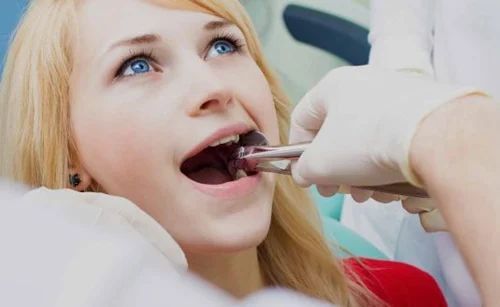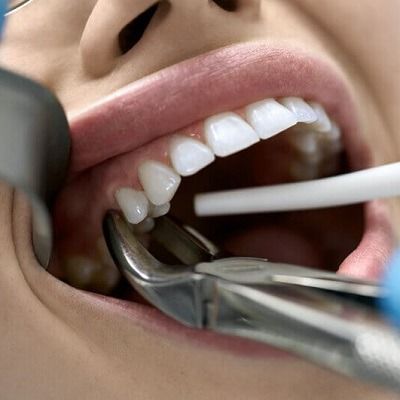Tooth extraction is a common dental procedure performed to remove a damaged, decayed, or problematic tooth. While the process might seem straightforward, several factors influence the overall Tooth extraction cost. Understanding these elements can help patients better prepare for their dental treatment and avoid surprises. This article explores the key components that impact the price of tooth extraction.
Types of Tooth Extraction
The type of tooth extraction required plays a significant role in determining the price. There are primarily two types of extractions: simple and surgical. A simple extraction involves removing a tooth that is visible in the mouth and can be extracted with basic tools. In contrast, a surgical extraction is more complex and is necessary when the tooth is broken, impacted, or located beneath the gum line. Surgical extractions often require an incision in the gum tissue and sometimes removal of bone around the tooth. Because of the complexity and time involved, surgical extractions typically cost more than simple extractions.
Location and Position of the Tooth
The location of the tooth in the mouth influences the difficulty of the extraction. Teeth at the front of the mouth are usually easier to extract compared to molars located at the back. Molars, especially wisdom teeth, often have multiple roots and are surrounded by denser bone. This makes their removal more complicated and time-consuming, which can increase the price. Additionally, teeth that are impacted or have an unusual position within the jaw can require more advanced techniques and equipment, further affecting the cost.

Complexity of the Extraction
Every tooth extraction case is unique in terms of complexity. Some teeth might come out easily with minimal effort, while others require careful manipulation and additional surgical steps. Teeth that have decayed extensively, broken off at the gum line, or are severely infected can complicate the procedure. The dentist or oral surgeon must spend more time and skill to safely extract these teeth, and the need for specialized instruments or anesthesia may also be higher. This complexity translates into a higher price.
Anesthesia Type and Requirements
The type of anesthesia used during the extraction procedure also influences the price. Local anesthesia, which numbs only the area around the tooth, is usually sufficient for simple extractions and is less expensive. For more complex or surgical extractions, sedation or general anesthesia may be necessary to ensure patient comfort and cooperation. These advanced anesthesia methods require additional resources, personnel, and monitoring equipment, all of which contribute to increased charges.
Pre-Extraction Consultation and Diagnostic Imaging
Before the extraction, a thorough dental examination and diagnostic imaging, such as X-rays, are necessary to evaluate the tooth’s condition and plan the procedure. The complexity and extent of the diagnostic process can affect the overall price. If multiple or advanced imaging techniques are needed to assess the roots, bone structure, or position of the tooth, the charges may increase accordingly. The initial consultation itself can also factor into the pricing as it includes the time and expertise of the dental professional.
Patient’s Oral Health Condition
The general condition of the patient’s oral health influences the extraction process. Patients with healthy gums and good bone density tend to have easier extractions. However, patients with gum disease, infections, or compromised bone structure require more delicate handling and sometimes additional procedures to prepare the site for extraction. The added complexity and care needed in such cases impact the pricing. Furthermore, some patients may require treatment of infection or inflammation before the extraction can be safely performed, which might also influence the cost.
Number of Teeth to be Extracted
The number of teeth requiring extraction affects the overall price as well. Extracting a single tooth generally costs less than removing multiple teeth in one session. The time, resources, and anesthesia requirements multiply with each additional tooth, thereby increasing the charges. Sometimes, when multiple teeth need removal, the procedure might be spread across multiple visits, each with its own associated costs.
Duration and Difficulty of the Procedure
The time taken to complete the extraction procedure is another factor influencing the price. A quick and straightforward extraction requires less chair time and resources, resulting in a lower price. On the other hand, lengthy procedures that involve complex surgical steps, bone removal, or extensive tissue management increase the duration and resources needed, which elevates the charges. The difficulty level is assessed by the dental professional and reflects in the pricing structure.
Equipment and Technology Used
Advanced dental technology and specialized equipment can enhance the safety and success of tooth extractions but may also influence the price. For surgical extractions, tools such as dental lasers, surgical drills, or 3D imaging systems might be utilized to improve precision and outcomes. The use of cutting-edge technology and equipment requires investment from the dental facility, which is factored into the procedure's pricing.
Expertise and Experience of the Dental Professional
The skills and experience of the dental professional performing the extraction also play a role. Highly trained oral surgeons or specialists typically charge more for their expertise. Their advanced knowledge, training, and ability to manage complex cases contribute to a higher pricing level. However, this expertise often ensures a safer and more efficient procedure, which can be worthwhile for many patients.
Facility and Setting of the Procedure
The environment in which the extraction is performed can affect the price. Procedures conducted in fully equipped surgical suites or hospital settings might have higher associated fees due to the overhead costs of maintaining such facilities. Conversely, extractions performed in standard dental offices might have lower facility fees. The choice of setting is often determined by the complexity of the procedure and the patient’s medical needs.
Additional Procedures During Extraction
Sometimes, extra procedures are required during tooth extraction to ensure successful removal or prepare for future treatments. These can include bone smoothing, removal of cysts, or the extraction of adjacent teeth to facilitate the process. Such interventions extend the time and resources needed, resulting in increased charges.
Insurance and Payment Options
While not directly affecting the inherent price of tooth extraction, insurance coverage and payment plans influence the amount a patient ultimately pays out of pocket. Understanding how insurance plans handle dental procedures, including exclusions or coverage limits, can help patients anticipate their financial responsibility. Some insurance policies may have different reimbursement levels depending on the complexity or type of extraction.
Patient’s Medical History and Special Needs
Certain medical conditions or medications can affect the tooth extraction process. Patients with bleeding disorders, immune deficiencies, or those taking blood thinners require specialized care and sometimes pre-procedure medical clearance. These factors increase the time, planning, and precautions necessary, which may be reflected in the pricing.
Timing and Urgency of the Procedure
Emergency tooth extractions performed outside of regular office hours or on short notice may carry additional fees due to the urgency and availability of dental professionals. Scheduling flexibility and timing can influence the overall charges associated with the extraction.
Tooth extraction cost in Dubai is influenced by a variety of interconnected factors ranging from the type and complexity of the extraction to the patient’s unique health profile and procedural setting. Understanding these influences provides patients with better insight into what to expect and how to plan for their dental treatment. Each case is unique, and the dental professional’s assessment is crucial to determining the best approach and associated pricing.
